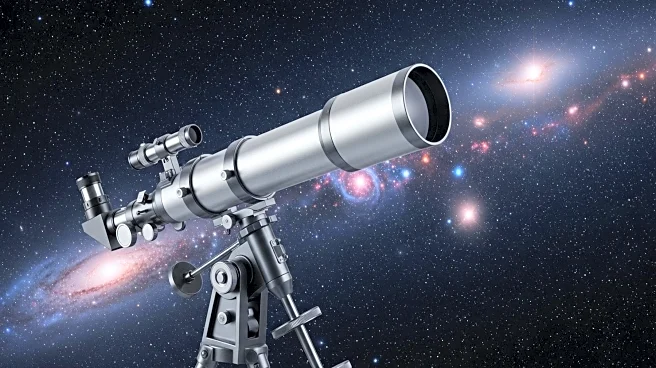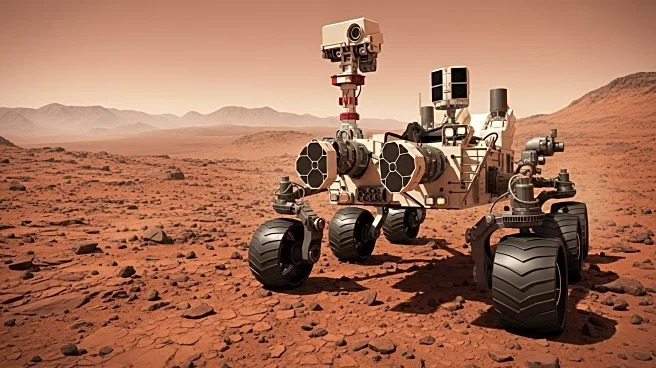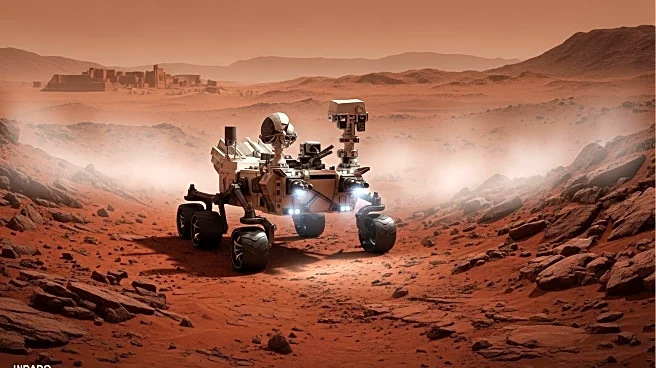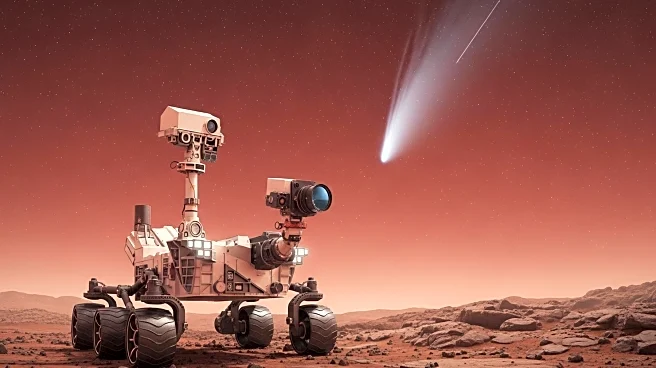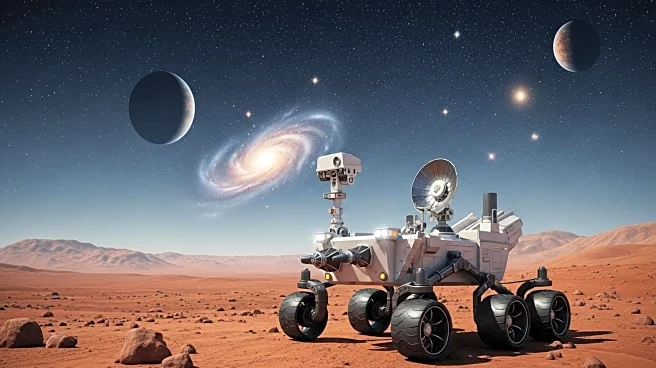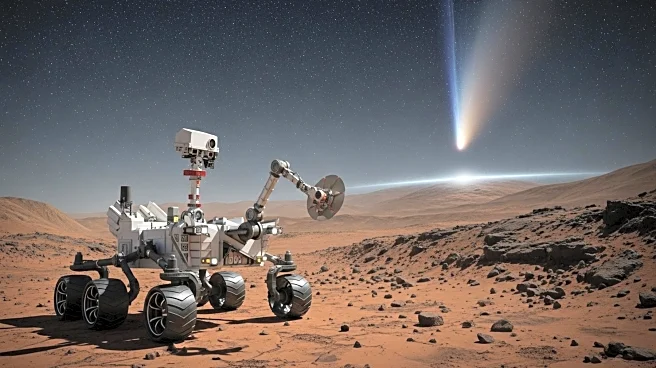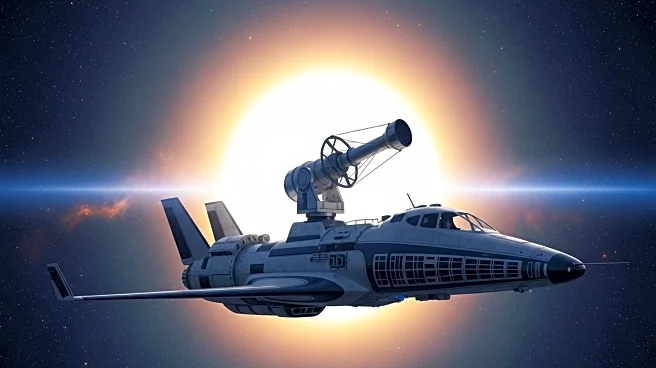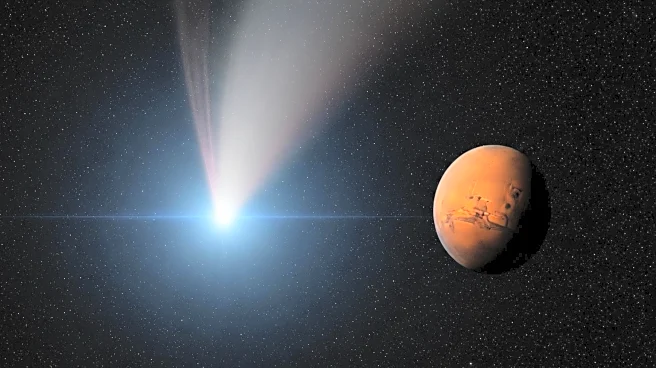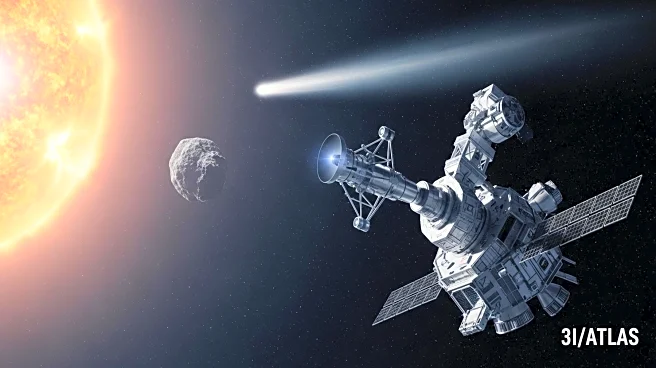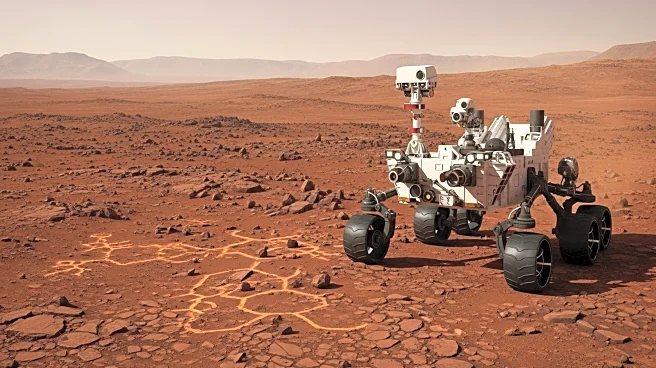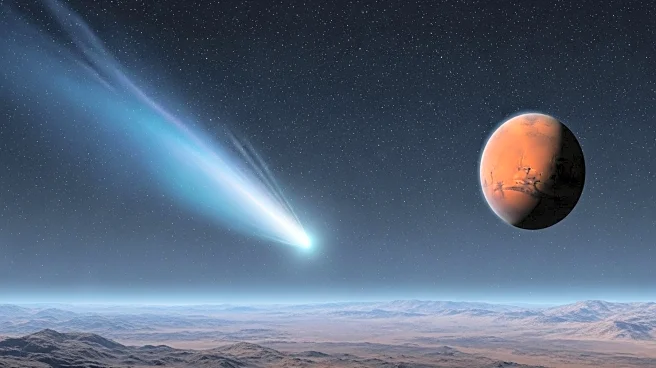What is the story about?
What's Happening?
NASA scientists have discovered a significant surge in ozone levels within Mars's north polar vortex, a region characterized by extreme cold and darkness. This phenomenon is linked to the absence of sunlight during the Martian winter, which prevents the breakdown of ozone by water vapor and ultraviolet light. The discovery offers insights into Mars's atmospheric conditions and suggests the possibility of a historical protective ozone layer similar to Earth's. Dr. Kevin Olsen from the University of Oxford highlights the importance of understanding these atmospheric dynamics, which could reveal Mars's potential for sustaining life in the past.
Why It's Important?
The presence of ozone in Mars's polar vortex is crucial for understanding the planet's atmospheric chemistry and history. If Mars once had a comprehensive ozone layer, it could have shielded the surface from harmful ultraviolet radiation, potentially increasing its habitability billions of years ago. This discovery is particularly relevant for upcoming missions like the European Space Agency's ExoMars Rosalind Franklin rover, set to explore signs of ancient life on Mars. Understanding the historical presence and variability of ozone could enhance the mission's focus and findings, offering a clearer picture of Mars's potential for life in its ancient past.
What's Next?
Future Mars exploration missions will likely focus on the implications of this discovery. The ExoMars Rosalind Franklin rover, scheduled for 2028, aims to investigate ancient life on Mars, and insights into the planet's atmospheric evolution could help identify regions of interest for exploration. As researchers continue to study Mars's atmosphere, these findings could inform future missions and the search for life, potentially reshaping our understanding of Mars's climatic history and its potential for supporting life.
Beyond the Headlines
Studying Mars's polar vortex poses significant challenges due to the total darkness during the Martian winter. Traditional observation methods become ineffective, but scientists have developed innovative techniques to overcome these obstacles. The ExoMars Trace Gas Orbiter and NASA's Mars Reconnaissance Orbiter provide crucial data for analyzing the Martian atmosphere. These efforts enhance our understanding of atmospheric dynamics and chemical processes, offering clues about Mars's climatic history and its potential for supporting life.
AI Generated Content
Do you find this article useful?


